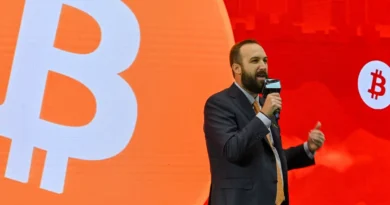Solana could flip Ethereum in transaction fees within a week: Report

The Solana network could be on track to overtake the Ethereum network in transaction fees, a potentially significant development for Solana’s status as a so-called “Ethereum-killer.”
Solana could flip Ethereum’s transaction fees as soon as this week, according to Dan Smith, senior research analyst at Blockworks, who wrote in a May 7 X post:
“Solana will flip Ethereum in transaction fees + captured MEV this month, maybe even this week.”
Captured MEV, or Maximal Extractable Value, refers to profits that are mostly captured through arbitrage trading on the protocols. MEV measures the maximum amount of value that can be extracted from a blockchain by a user or a group of users.
Moreover, Solana’s $2.8 million total economic value was near Ethereum’s $3.1 million total economic value on May 7, according to Smith’s X post:
“Defining “total economic value” (shill me better names) as total transaction fees + captured MEV returned to validators. Yesterday, Ethereum: $3,165,772, Solana: $2,803,313.”

However, Solana’s daily transaction fees are still far from Ethereum’s. Ethereum generated over $2.75 million worth of fees in the past 24 hours, compared to Solana’s $1.49 million, according to DefiLlama data.

Looking at the total value locked (TVL), Solana’s $3.94 billion TVL is still a small fraction, or around 7.4% of the Ethereum network’s over $53 billion TVL.
Related: How Binance played a key role in arrest of ZKasino scam suspect
Is Solana really an “Ethereum killer”?
Solana launched on mainnet in March 2020, with a claimed throughput of 50,000 transactions per second (TPS), promising to improve on the lack of scalability and inefficiencies of Ethereum, as a so-called “Ethereum-killer.”
Unlike Ethereum’s modular approach to scalability via layer-2 (L2) scaling solutions, Solana’s monolithic approach aims to create scalability and low fees as a standalone blockchain network.
However, Solana’s approach saw widespread criticism following its previous outages. At the beginning of April, the demand for memecoins caused approximately 75% of Solana transactions to fail, as the network was unable to handle the large demand.
On Feb. 6, block production on Solana stopped for approximately five hours, before engineers and validators were able to restart the network, according to Solana’s status page.
Related: Bankruptcy law firm S&C absolved from misconduct, according to new FTX proposal



